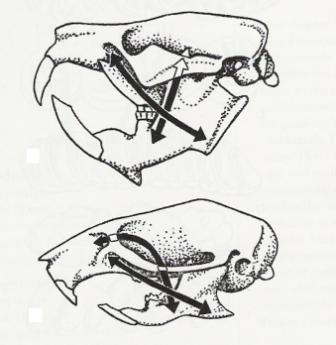Evolutionary History of Sciuromorph and Myomorph
Jaw Characteristics
The order Rodentia is the largest order in the class Mammalia with an estimated 2,000 species. They are distributed worldwide and are native everywhere except for a few oceanic islands, New Zealand, and Antarctica. They have successfully adapted to changing environments and inhabit terrestrial, arboreal, scansorial, fossorial, adn semiaquatic. Rodents are well known for their gnawing capabilities and have well developed masseter muscles. The different jaw musculature and skull structure are used to distinguish different "groups" of rodents. The most primitive group with the least chomping ability and greatest lateral motion is known as protogomorph. The most advanced group with the greatest chomping power with the least lateral motion ability and the largest infraorbital foramen is known as the hysticomorph group. The two groups being compared in this website are the two groups in between protogomorph and hysticomorph; sciromorph and myomorph. The sciuromorph (the top illustration of figure 1) group comes after protogomorph in terms of primitiveness and has a small infraorbital foramen through which no masseter muscles pass. The middle masseter muscle is anterior to the eye and the deep masseter muscle is beneath the zygomatic arch. The myomorph group (the bottom illustration) that comes after sciuromorph has a considerably larger infraorbital foramen compared to the sciromorph group in proportion to skull size. This allows for the deep portion of the masseter muscle to pass through the infraorbital foramen and articulate on the rostrum.

Figure 1: This figure illustrates the origin and insertion of the medial and lateral masseter muscles in the sciuromorph (top) and myomorph (bottom).